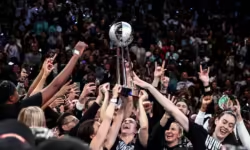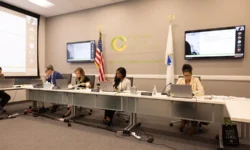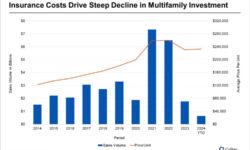
Washington D.C. continues to face the troubling reality of gun violence, with recent reports confirming yet another life lost to the epidemic. In a tragic incident that has gripped the city, authorities have identified the 16-year-old boy who was fatally shot in Southeast Washington, D.C., a reminder of the persistent issues facing the nation’s capital. The teen’s death has reignited conversations about youth violence, gun control measures, and the need for community-based solutions to curb these tragic events. This heartbreaking incident serves as a poignant moment for Washington residents as they grapple with the devastating impact of violence on their communities.
The Shooting Incident in Southeast Washington
On a quiet evening in Southeast Washington, gunshots shattered the peace of the neighborhood, resulting in the untimely death of a teenager. Police were called to the scene following reports of a shooting, and upon their arrival, they discovered a 16-year-old boy suffering from gunshot wounds. Despite immediate medical intervention and being rushed to a nearby hospital, the teen succumbed to his injuries, marking another fatality in the city’s escalating gun violence crisis.
As police investigated the crime scene, the community was left reeling from yet another act of violence targeting a young life. The identity of the boy was withheld initially, but after notifying his family, authorities publicly identified the victim, which sent shockwaves through the Southeast Washington neighborhood.
Increasing Gun Violence in Washington D.C.
The fatal shooting of the 16-year-old boy is just one of many violent incidents in Washington D.C. in recent years. Gun violence has become a significant public safety concern in the capital, with data from Washington daily news sources indicating an uptick in violent crimes, particularly in Southeast D.C. This area, historically one of the most under-resourced and marginalized parts of the city, has seen a disproportionate number of shootings and homicides, many of them involving teenagers.
According to the latest Washington news today, city officials and law enforcement are grappling with the complex nature of the violence, which is fueled by a combination of factors, including economic disparity, gang activity, easy access to firearms, and a lack of community resources. Southeast D.C., in particular, has been plagued by a rise in gun-related incidents, leading to a heightened focus on strategies to prevent these tragedies.
Law Enforcement’s Response and Investigation
The Metropolitan Police Department (MPD) has ramped up efforts to solve the case and prevent further violence. Following the fatal shooting, detectives have been working tirelessly to gather evidence and speak with witnesses in hopes of identifying the perpetrator. Washington DC breaking news today reveals that law enforcement is calling for anyone with information to come forward, offering rewards for tips that could lead to an arrest and conviction in this case.
The MPD has also increased patrols in the area in the wake of the shooting, particularly around schools and youth centers, to reassure residents and deter further violence. This increased police presence, while providing immediate security, has also raised broader questions about the role of policing in addressing the root causes of gun violence in the community.
The Impact on the Community
The Southeast Washington community has been profoundly affected by the loss of the young boy. Community leaders, residents, and activists have come together to mourn the victim, while also demanding action from local government officials. Vigils have been held in honor of the boy, with residents calling for peace and unity amid growing frustration over the continued loss of young lives to gun violence.
For many in the community, the death of the 16-year-old boy serves as a painful reminder of the systemic issues that have long plagued Southeast Washington. Poverty, lack of educational opportunities, and the absence of adequate youth services are just some of the factors that have contributed to the rise in crime and violence in the area. As community members grapple with grief, there is also a growing push for long-term solutions that go beyond law enforcement efforts.
Washington Commanders and Youth Initiatives
The tragic loss of a young life to gun violence has also drawn the attention of local organizations and sports teams, including the Washington Commanders. The NFL team, which is a beloved part of the city’s identity, has been involved in various community outreach programs aimed at empowering youth and addressing the root causes of violence. Through partnerships with local schools and non-profits, the Commanders have sponsored youth football leagues, mentorship programs, and educational initiatives that aim to keep children engaged in positive activities, away from dangerous influences.
The Commanders’ efforts reflect a broader understanding that preventing violence in Washington D.C. requires a multifaceted approach. By providing young people with safe spaces to learn, grow, and play, these initiatives aim to break the cycle of violence and offer alternatives to the streets. While such programs can’t undo the tragedy of the recent shooting, they offer a glimmer of hope for a future where fewer young lives are lost to violence.
Gun Control and Legislative Efforts
In the aftermath of the shooting, the debate over gun control has once again surfaced in Washington D.C. and nationwide. Advocacy groups, lawmakers, and residents alike are calling for stronger measures to curb the flow of illegal guns into the city. Despite having some of the strictest gun laws in the country, Washington D.C. remains vulnerable to firearms being trafficked from neighboring states with looser regulations.
As highlighted in recent Washington DC news, local officials are pushing for tougher penalties for gun-related offenses and advocating for federal action on gun control. Measures such as universal background checks, restrictions on high-capacity magazines, and stronger enforcement of existing laws are some of the proposals gaining traction. However, the road to comprehensive gun reform remains fraught with political and legal challenges.
The Role of Mental Health and Social Services
While gun control is a critical part of the solution, many experts argue that addressing the underlying causes of gun violence requires a broader focus on mental health and social services. Southeast Washington, like many underserved communities across the country, faces significant barriers to accessing mental health care, job training, and other essential services. These disparities contribute to the sense of hopelessness and anger that often fuels violence.
In response, local organizations are calling for increased investment in mental health services, trauma-informed care, and community-based violence prevention programs. The district’s Department of Behavioral Health has already begun expanding its outreach efforts in neighborhoods affected by violence, providing counseling and support to families and individuals impacted by trauma.
Calls for Justice and Change
As the investigation into the shooting continues, the community and advocacy groups are calling for justice for the young victim and his family. While law enforcement works to bring the perpetrator to justice, there is also a renewed call for systemic changes that address the root causes of violence in Southeast Washington. Residents, activists, and local leaders are urging city officials to invest more in community-based solutions, including education, job opportunities, and mental health services, to help break the cycle of violence.
The tragic loss of a 16-year-old boy has cast a long shadow over Washington D.C., highlighting the urgent need for action on multiple fronts. As the city mourns yet another young life lost to gun violence, the question remains: How many more lives must be taken before meaningful change is achieved?





